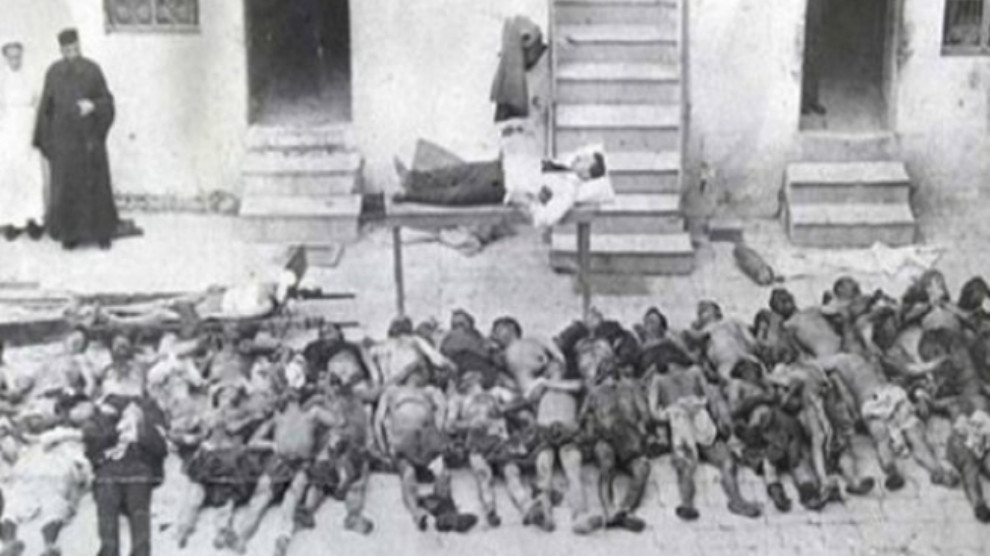Centenary of 1915 Syriac (Sayfo) genocide
The date 1915 brings to mind the Armenian genocide. However, it was not only Armenians who were slaughtered in 1915, but also Greek and Assyrian (Syriac, Chaldean and Aramaic) Christians.
The date 1915 brings to mind the Armenian genocide. However, it was not only Armenians who were slaughtered in 1915, but also Greek and Assyrian (Syriac, Chaldean and Aramaic) Christians.

The date 1915 brings to mind the Armenian genocide, which was perpetrated by the Committee of Union and Progress, which was in power in the final years of the Ottoman Empire. However, it was not only Armenians who were slaughtered in 1915, but also Greek and Assyrian (Syriac, Chaldean and Aramaic) Christians.
Although the Republic of Turkey refuses to acknowledge this crime against humanity, the Armenian genocide of 1915 is gaining increasing international recognition. Syriacs in Mesopotamia call the massacres of 1915 ‘Sayfo’ in the Syriac language, which is similar to the Aramaic spoken by Jesus Christ.
As the Ottoman Empire gradually collapsed, with Christian peoples in the Balkans gaining their independence in 1912, peoples in Africa and Arabia also rebelled. The Ottoman state took advantage of the outbreak of WWI in 1914 to carry out massacres of Christians in the Aegean, Thrace and in Van and Hakkari. In 1915 the Ottomans started a genocide of Syriacs and Armenians in Van, Bitlis and surrounding areas, then extending this to Diyarbakır, Hakkari and Tur Abdin.
Property seized
This genocide launched against the Syriac, Armenian and Hellenic peoples of Mesopotamia and Anatolia killed more than a million Armenians, half a million Syriacs and 300 thousand Greeks. Hundreds of thousands of others were displaced or forcibly converted to Islam. In the process the property of the Christian peoples was seized.
Joint crime of Ottoman Empire and Turkish Republic
The triumvirate in charge of the Committee of Union and Progress, Talat Pasha, Enver Pasha and Cemal Pasha, are held responsible for this genocide. The Committee of Union and Progress (CUP) represented ‘Turanianism’ an extreme nationalist Turkish ideology, and the cadre of the CUP also constituted the founders of the Turkish Republic. Therefore, the CUP created ‘Kemalism’, which is accepted as the national ideal of the Republic of Turkey. It is thus apparent that the genocide of 1915 is a joint crime of both the Ottoman Empire and the Republic of Turkey. The Republic sees itself as the heir to the Ottoman Empire.
Syriac population prior to the genocide
Prior to the genocide of 1915 there were 70,000 Syriacs in Azerbaijan and north west Iran 70.000, 150.000 in the Hakkari region, 25.000 in the province of Sivas, 5,000 in Harput, 60,000 in Diyarbakır, 98,000 in Van, 15,000 in Bitlis, 200,000 in the Turabdin area, 100,000 in Mosul 100.000, 10,000 in Sapna, Sapna, 15,000 in Zibar, 10,000 in Botan, 5,000 in Urfa 5.000 and 25,000 in Siirt.
300,000 Syriacs massacred
It is estimated that around 300,000 Syriacs were massacred in 1915 and that 200,000 died in camps. Many others were displaced or forcibly converted. The genocide of Syriacs has only been recognised by the Swedish Parliament (2010) and Armenian Parliament (2015), while the Armenian Genocide has been more widely recognised internationally.
*This piece by Suphi Aksoy-Yakup Nuhomu was originally published by Özgür Gündem and translated from Turkish by ANF English service.